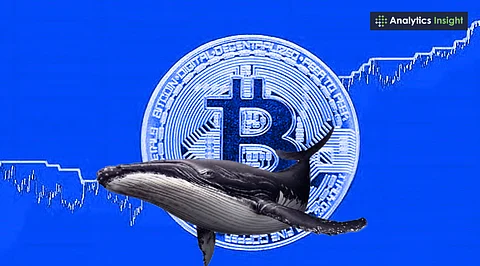Technology
Bitcoin Price Driven by Scarcity, Demand, and Market Forces

Bitcoin’s price is influenced by a range of factors, including scarcity, institutional demand, and broader market conditions, rather than solely by the actions of large holders or social media influencers. The cryptocurrency has gained recognition as a long-term asset, often referred to as “digital gold,” due to its limited supply and increasing institutional interest.
Understanding the Factors Behind Bitcoin’s Value
The price of Bitcoin is fundamentally shaped by its maximum supply of 21 million coins, which creates inherent scarcity. Unlike traditional currencies, Bitcoin cannot be printed at will. This fixed supply is reinforced by periodic halving events, which reduce the rewards miners receive for validating transactions. In April 2024, the reward was cut to 3.125 BTC per block, thus slowing the introduction of new Bitcoin into circulation. Historically, such halvings have often resulted in upward price pressure as demand remains stable or increases.
Institutional adoption has become a significant driver of Bitcoin’s price. In 2025, numerous corporations and financial institutions have integrated Bitcoin into their strategies, viewing it as both a strategic reserve and an investment vehicle. For instance, in July 2025, MicroStrategy acquired over 4,200 BTC at an average price of $111,827 per Bitcoin. Furthermore, the introduction of spot Bitcoin exchange-traded funds (ETFs) has facilitated inflows exceeding $45 billion this year, making the asset more accessible to traditional investors.
The Role of Regulation and Economic Conditions
Government regulations play a crucial role in shaping Bitcoin’s market price. Supportive legislative frameworks can enhance investor confidence, while stringent restrictions may lead to market sell-offs. In the United States, the implementation of pro-cryptocurrency policies and the establishment of a Strategic Bitcoin Reserve holding more than 200,000 BTC signal a robust endorsement from authorities.
Economic conditions also heavily influence Bitcoin’s price trajectory. When central banks indicate lower interest rates or when inflation rises, Bitcoin often attracts investors seeking a hedge against currency devaluation. At the beginning of August 2025, Bitcoin’s price hovered around $114,000, slightly down from a peak of $123,000 in July. This slight correction illustrates the market’s natural fluctuations, driven by investor sentiment and external economic factors.
Large holders, often referred to as “whales,” can significantly impact short-term price movements by transferring substantial amounts of Bitcoin. In 2025, wallets with holdings exceeding $10 million saw an increase of over 4 percent, indicating strong accumulation. Media narratives and social media often amplify these movements, resulting in temporary volatility. Nevertheless, such fluctuations typically do not alter the long-term price unless they align with deeper market fundamentals.
Bitcoin’s network health and user engagement are vital for sustaining its price. A rise in active wallets and transaction volume reflects greater adoption, reinforcing Bitcoin’s long-term value. Innovations such as Layer-2 solutions, including the Lightning Network, are enhancing Bitcoin’s scalability and usability. Although competitive cryptocurrencies like Ethereum and Solana vie for market liquidity, Bitcoin’s established brand and security continue to position it as the leading store-of-value asset.
Mining Bitcoin involves substantial investment in technology and energy, establishing a baseline production cost for new coins. As prices approach these costs, less efficient miners may exit the market, consequently reducing supply and stabilizing prices. While mining expenses were once viewed as the primary driver of Bitcoin prices, in 2025, institutional demand and global adoption are poised to play a more significant role in maintaining value.
Currently, Bitcoin trades between $114,000 and $114,400, following a minor correction from its July peak of $123,000. Analysts identify key support levels around $110,000 to $112,000, while resistance is observed near $120,000 to $123,000. Breaking above $123,000 could pave the way for Bitcoin to reach $130,000 to $143,000, while a drop below $110,000 might prompt short-term selling.
In summary, the price of Bitcoin reflects a broader shift in the perception of money and value. Factors such as its scarcity, increasing institutional participation, favorable regulations, and rising adoption underpin its market price. Although whale movements and high-profile tweets may dominate headlines, Bitcoin’s evolution into a strategic, long-term asset ensures its value is increasingly determined by substantial economic forces rather than transient hype.
-

 Technology4 months ago
Technology4 months agoDiscover the Top 10 Calorie Counting Apps of 2025
-

 Health2 months ago
Health2 months agoBella Hadid Shares Health Update After Treatment for Lyme Disease
-

 Health3 months ago
Health3 months agoErin Bates Shares Recovery Update Following Sepsis Complications
-

 Technology3 weeks ago
Technology3 weeks agoDiscover 2025’s Top GPUs for Exceptional 4K Gaming Performance
-

 Technology2 months ago
Technology2 months agoElectric Moto Influencer Surronster Arrested in Tijuana
-

 Technology4 months ago
Technology4 months agoDiscover How to Reverse Image Search Using ChatGPT Effortlessly
-

 Technology4 months ago
Technology4 months agoMeta Initiates $60B AI Data Center Expansion, Starting in Ohio
-

 Technology4 months ago
Technology4 months agoRecovering a Suspended TikTok Account: A Step-by-Step Guide
-

 Health4 months ago
Health4 months agoTested: Rab Firewall Mountain Jacket Survives Harsh Conditions
-

 Lifestyle4 months ago
Lifestyle4 months agoBelton Family Reunites After Daughter Survives Hill Country Floods
-

 Technology3 months ago
Technology3 months agoUncovering the Top Five Most Challenging Motorcycles to Ride
-

 Technology4 weeks ago
Technology4 weeks agoDiscover the Best Wireless Earbuds for Every Lifestyle



















